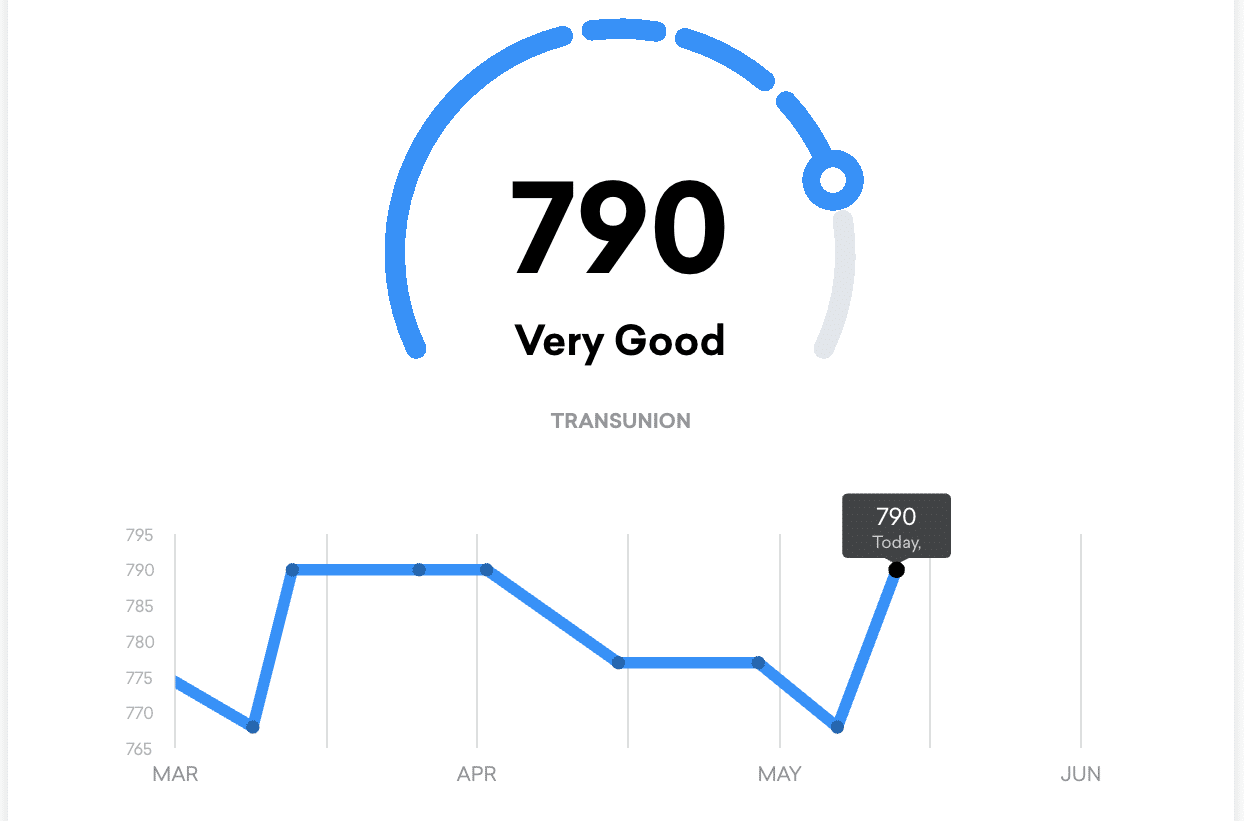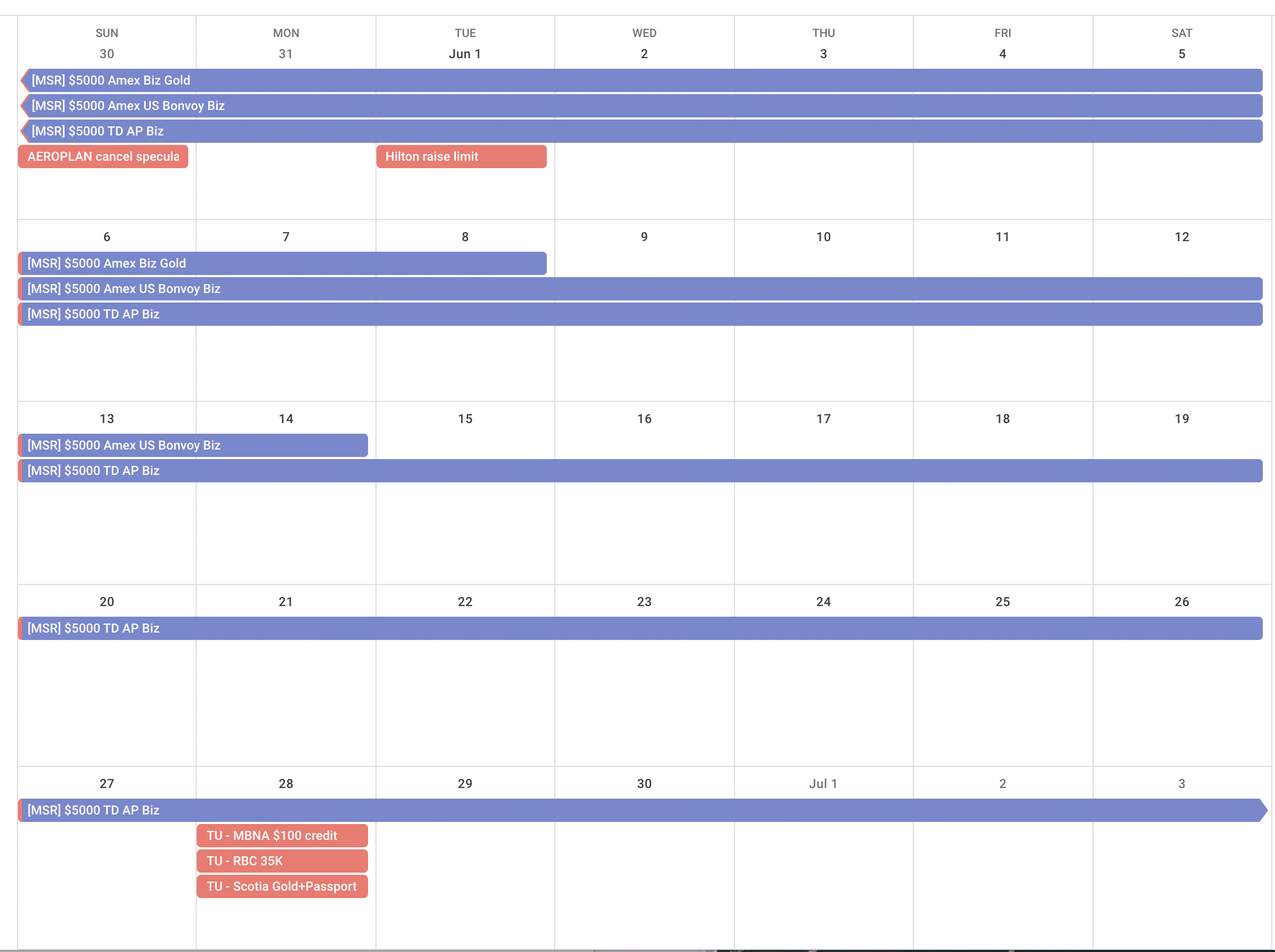To be successful in racking up credit card rewards quickly and using them effectively to achieve your travel goals, it takes a concerted effort and consistent attention.
Over the years, I keep adding additional layers to my game, and even the simplest details can sometimes get lost in the complexity of it all. Here, I’ll outline some recurring Miles & Points chores, and some methods I use to make sure they don’t get missed.
Even though the day-to-day duties of growing the website are quite different from what it takes to actually coordinate award travel for ourselves, I’ll try to provide some insight through the lens of someone who does this as a hobby on the side.
Quarterly Tasks
Let’s start with the big picture.
I stay on top of most Miles & Points chores much more frequently, but once in a while it’s good to step back and take stock of my travel goals. There’s often quite a delay between earning and booking, and again between booking and travelling, so a long-term outlook is important to keep my goals and strategies aligned.
Therefore, I like to review whether I’m on track with my current earning strategy to net enough points to book what I want, when I need to. I might realize that I need to be a bit more aggressive for a few months, or focus on a different award program.
In particular, if I’m trying to nab a flight or hotel booking with limited availability, I want to jump on it as soon as seats or rooms are released. As I consider any new trips I’m planning 10-12 months out, I might schedule a specific upcoming day to make a booking for the distant future.

Depending on how antsy I’m feeling, I sometimes review my travel aspirations more frequently than once every few months. Ideally I try to maintain enough points in my preferred loyalty programs so that booking is never an issue, and all I have to worry about is availability timelines.
Monthly Tasks
This is where most of the magic happens to ensure that my quarterly visions come to fruition.
First, I review my credit card portfolio and plan my upcoming applications, cancellations, and product switches. There are often a lot of factors to weigh together:
- upcoming annual fees
- how sensitive each bank is to early card closures and repeat bonuses
- recent and upcoming credit inquiries, and my likelihood of approval for new credit
- redeeming or keeping points alive before I close a card
- opportunity cost of focusing on other minimum spend requirements simultaneously
Usually there’s a bit of leeway on the exact date I open or close a credit card, so I find a monthly check-up is fine and I’ll make a note to deal with it whenever I have time.
However, if in my monthly review I discover that my timelines are tight, like if I’m trying to snipe an expiring welcome bonus or receive a new card in time for a big expense, I’ll schedule a specific day to get it done to ensure that everything falls into place, if I’m unable to address it immediately.
I try to maintain a rough sketch of my next steps as far out as the next “event” (application, cancellation, product switch, or annual fee) for each card. Things do change unexpectedly, though, so I always check on my credit card timelines each month in case I need to make adjustments.
Once that’s all set, I reconcile my transactions for the previous month for all of my financial accounts. On the same day each month, I grab the most recent statement for all of my credit cards and bank accounts, and manually enter everything into a gigantic spreadsheet.
I keep detailed records because I also use this method for personal finance purposes, like to make sure I’m not spending too much on takeout (spoiler alert: I am). But if you’re just doing it for Miles & Points purposes, you could simply record the statement balance each month.
Either way, the key is to quickly verify my progress towards minimum spend requirements so that I don’t miss a welcome bonus on my new cards. If I’m lagging, I’ll make sure to put more purchases on that card for the next month.
In addition to tracking my income and expenses, I also keep a ledger of my points accounts. I think a monthly balance update is sufficient, although I do watch for any outstanding large sums that I’ve been expecting, like a welcome bonus or a sizeable shopping portal rebate.
I’m usually not too concerned about points expiring, as I’m always earning or redeeming for all of my programs of interest. (I honestly haven’t found AwardWallet to be immensely helpful or accurate, but that’s just me, and I’m happy to do it manually.)
As for travel plans, I occasionally check for a better deal on my award bookings. If I’ve got anything booked at a higher rate, I’ll see if the prices have lowered, and if so, I’ll cancel and rebook.
Finally, I’m still trying to bring my friends and family into the Miles & Points ecosystem. I consider this a regular chore because I think it’s important to always be looking for ways to expand your game, but you might have to tread lightly. I haven’t (yet) turned up the heat more often than once a month, but your relationships might be able to withstand a little more persistence!
Weekly Tasks
Weekly maintenance is a bit less intensive, but still important.
You may have noticed that I didn’t include paying my credit card bills as a monthly task. That’s because I try to do it more often!
I like to pay my statement down early, to avoid a high utilization being reported to the credit bureaus. This keeps my credit score high at all times, which I find helpful in case I need to make a mid-month change to my application timelines and jump on a sudden offer.
Plus, with dozens of statement dates scattered across the entire month, it’s too easy to miss one, even if you don’t go paperless as I do. I also don’t use preauthorized payments, as the bank accounts and credit cards I use change quite often.
Luckily, I don’t actively use most of my credit cards on a regular basis, so it’s not like I’m checking all accounts weekly, maybe only 10 at most at any given time. I only check the cards in my wallet – new cards with a minimum spending requirement, plus daily drivers – and I review and pay off my sock drawer cards monthly, just in case I’ve missed something.
I’m extra careful not to fall behind on paying off my US credit cards. I’m on top of timely cross-border money transfers, as you never know when there could be a delay there.
If I have a lot of money moving around, sometimes I do a reconciliation on any impacted accounts more frequently than once a month, but I try to limit doing this in between statements as it’s easy to miss or double-count a transaction.
I also keep an eye out for any bonuses that I expect to receive in between statement cycles, like Amex Membership Rewards welcome bonuses and referral bonuses. I don’t reconcile these with my points balance until my statement, but I like to know as soon as possible if I met the minimum spend requirement properly or if a friend’s application was approved.
Aside from that, there’s not much going on, just chipping away at ongoing tasks. When it comes to things like claiming missing credits (like eStore orders or hotel elite nights), those do demand attention, but they don’t need to be done every day. I’ll push forward with them when I have time, and often I’m waiting for some other party’s response before I can move things along.
Daily Tasks
Thought you were off the hook? Think again!
The Miles & Points landscape can change on a whim, and it’s critical to constantly stay tuned to the news. These details shape all of the big-picture decisions I’ve made above.
No surprise, my first stop in my daily routine is get up-to-date with all the latest news from a variety of sources: chat groups, websites, forums, etc.
By being plugged into the community, I’m attuned to limited-time opportunities like new credit card welcome bonuses, new Amex Offers, transfer bonuses, and shopping portal events. And by soaking in all the details on a regular basis, the tapestry of data points guides the ever-changing strategies I use to inform my monthly credit card review sessions.
In addition, I keep an eye on the major US bloggers, but if you don’t want to add another news source to your daily routine, Prince of Travel tries to cover most of the developments that impact Canadians. As for staying on top of the nitty-gritty of US credit card strategy, my game down south moves at a glacial pace, so I only brush up on the relevant details when I need to.
Of course, any scheduled chores that were planned at the quarterly or monthly stage get done here, like opening or closing credit cards, or booking time-sensitive award redemptions.
And don’t forget, I also use my credit cards on a daily basis. I try not to over-optimize between welcome bonuses and strong category earn rates for every single purchase, but I’m always earning towards one or the other.
Last but not least – I check my mail! There’s no time to waste when you’re eagerly awaiting a brand new credit card.
How I Stay Organized
I have yet to find or develop a comprehensive, automated tracking solution that meets the complex needs of points collectors. Instead, I’ve got an arsenal of spreadsheets, calendars, and notes to help me stay on track.
I primarily use three separate spreadsheets to track everything: one for transactions, one for points, and one for credit cards.
The transactions spreadsheet is mostly a personal finance tool, but as I mentioned above, I do use it to double check my progress towards minimum spend requirements. I’ve been meaning to switch to a full-fledged double-entry system to track the movement of money from one account to another, but for now I’ve been managing fine just with income and expenses.
The points spreadsheet is more akin to a net worth snapshot, but for bank rewards and loyalty programs. I’ve honestly let this one slide a bit, and I’d say it’s the least important to track in detail on a regular basis.
The credit card spreadsheet, however, is the hub of my entire Miles & Points strategy. I was inspired by Ricky’s original spreadsheet years ago, and now I tease him about how rudimentary his is compared to mine!
In addition to Ricky’s indispensable data, I also include columns for the following (among other things):
- credit inquiries, to incorporate into planning future application timelines
- a success/failure flag for earning a (repeat) welcome bonus
- the credit limit, for watching my utilization and in case I need a card for a large purchase
- the card’s last four digits, because keeping historical records of repeat cards would be a nightmare without it
- a unique identifier for each trade line, to properly maintain age of accounts
I’ve also set up filters to only show open credit cards, inquiries against each bureau, and cards with each bank. Those are all essential for strategizing with a subset of relevant data.
To stay on top of statements and payments, I use conditional formatting on the Statement Date column to highlight any statement date in the past. When I open the spreadsheet for my weekly review sessions, I can quickly see if there are any payments that need to be made urgently, then I manually advance the date by one month. I don’t use alerts for statements and payments, instead leaning on this sheet which I check quite reliably.
I also have a separate Gantt chart of sorts for visualizing past and future applications, closures, and product switches. It’s not very precise, but it amuses me and it’s pleasant to look at.
I used to carefully keep track of minimum spend requirement deadlines and amounts remaining, but as I’ve gotten more comfortable juggling multiple cards at once, I’ve let this fall by the wayside a bit. I’m confident that I’ll have no trouble meeting the thresholds, and I try not to straggle on these targets.
I prefer to use a new sheet for each credit file – one per person, per country. My multiplayer setup isn’t too big yet, but soon I’ll look to set up a master summary sheet.
Beyond my spreadsheets, I have a Miles & Points calendar. When a specific date comes up in my monthly review sessions, I’ll slot it in. I haven’t found alerts necessary, but they’d be super easy to implement.
In my Notes app, I keep a list of all of my referral links handy. I also jot down miscellaneous ideas that I need to try, but anything worth doing twice usually gets committed to memory.
Admittedly, my methods are always a work in progress, and sometimes I do miss a few details. My challenge is that sometimes things change before I can find sensible ways to log them in my system, and then I’m playing catch-up.
Whatever methods you settle on, the key is to minimize cognitive overhead. Track the things that matter to you, make it easy to address the aspects you naturally find more difficult, and put as much on autopilot as you can.
Ultimately, as long as you’re not missing your credit card payments, you can afford to make a bit of a mess. The points will come in due time, and your process will only get more smooth with practice.
Conclusion
Award travel doesn’t happen overnight, and it doesn’t happen automatically. By setting up a rewards regimen, you can build a successful routine that lets you stay on top of the details without getting overwhelmed.
I’ve given you a snapshot of some strategies that work for me – some of it overkill, some of it not enough, and all of it constantly in flux as I hone my craft. I’m curious to hear what works for you, and how you balance your Miles & Points hobby with the rest of your life.



















Generally, what do banks checking on your credit for an application consider too much in terms of the number of cards one has and the frequency of applications/hard checks?
Check out this article on the subject: https://princeoftravel.com/guides/how-to-manage-your-credit-inquiries/
any chance you could share a downloadable template of your spreadsheet? 🙂
Hopefully soon, stay tuned!
Very interesting to see the things you’re tracking and frequency of review. Also great seeing sample tools you use. Thanks for sharing!